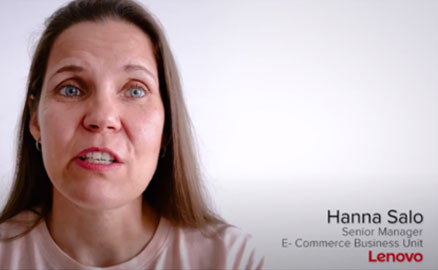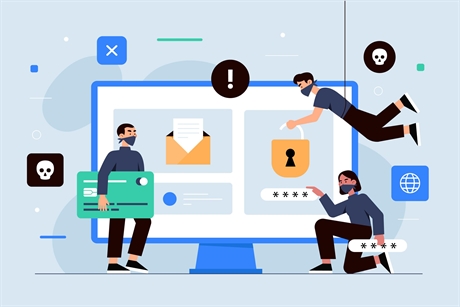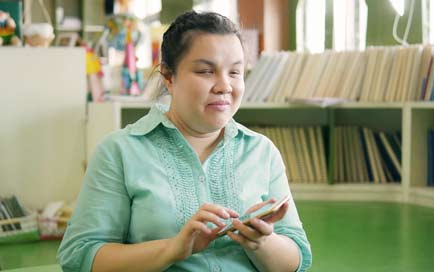Accessibility has become necessary due to the rapid growth of online information and interactive services provided on the web and by mobile applications. Some examples are online banking and shopping, using public services online, communicating with our relatives and friends. The lack or absence of accessibility contributes to the exclusion or partial exclusion of many people from society.
Making websites and mobile apps more accessible results in a better user experience for all, not just for users with disabilities. Simple changes that make sites more user-friendly bring huge improvements for everyone. For instance, being able to listen to a text when lighting conditions are not optimal, or reading subtitles to a video when the sound is inaudible. Accessibility also benefits businesses with economic gains, as they can reach a larger customer base.
Web accessibility is not just about technical standards, web architecture and design. It is an issue of political will and of moral obligation, now enshrined in the United Nations Convention on the Rights of Persons with Disabilities (UNCRPD). Article 9 of the Convention, to which the EU is a party, requires that appropriate measures are taken to ensure access for persons with disabilities, on equal basis with others, to inter alia information and communication technologies, including the Internet.
Adoption of the directive
The directive on making the websites and mobile apps of public sector bodies more accessible was published on 2 December 2016 and entered into force on 22 December 2016. People with disabilities – especially persons with vision or hearing impairments – will have better access to the websites and mobile applications of public services.
The rules encoded in the directive reflect the Commission`s ongoing work to build a social and inclusive European Union, where all Europeans can take full part in the digital economy and society.
The text of the Directive:
covers websites and mobile apps of public sector bodies - with a limited number of exceptions (e.g. broadcasters, livestreaming),
refers to the standards to make websites and mobile apps more accessible. Such standards foresee for instance that there should be a text for images, or that websites can be browsed without a mouse, which can be difficult to use for some people with disabilities,
requires regular monitoring and reporting of public sector websites and mobile apps by Member States. These reports have to be communicated to the Commission and to be made public. The Directive comes along with the European Accessibility Act proposed in December 2015 (press release) which covers a much wider number of products and services.
Everyone should benefit from the opportunities offered by the internet and fully participate in the digital society. #a11y #WebDirective https://t.co/2yHHrH9mFo — Andrus Ansip (@Ansip_EU) 26. Oktober 2016
The directive was first proposed by the Commission in 2012. Following negotiations, the European Parliament, the Council and the Commission agreed on an updated version of the directive. After adoption by the Council in July 2016, the European Parliament approved the directive on 26 October 2016.
Next Steps
Member States have until 23 September 2018 to transpose the text into their national legislation. The European Commission will adopt implementing acts by the end of 2018. This will ensure uniform conditions for the implementation of the relevant provisions of the Directive.
Background
The text of the Directive (EU) 2016/2102 of the European Parliament and of the Council of 26 October 2016 on the accessibility of the websites and mobile applications of public sector bodies.
Joint Statement by Vice-President Ansip and Commissioner Oettinger welcoming the adoption of the first EU-wide rules to make public sector websites and apps more accessible.
Press release about the political agreement to make public sector websites and apps more accessible.
The European standard on accessibility requirements for public procurement of ICT products and services was adopted in February 2014. Read the recent version of the European standard.
The European Commission presented its proposal in December 2012 for a Directive on the accessibility of public sector bodies’ websites providing common rules across all Member States.
The European Disability Strategy 2010-2020 builds on the UN Convention and contains actions in several priority areas, including web accessibility, with the objective "to ensure accessibility to goods and services including public services and assistive devices for people with disabilities". Article 9 of the United Nations Convention on the Rights of Persons with Disabilities obliges Member States and the EU to take appropriate measures to ensure access for persons with disabilities, on equal basis with others, to inter alia information and communication technologies, including the internet.
Many national authorities in Europe are committed to the accessibility of public websites and most Member States have introduced guidelines or regulation based on WCAG 2.0, and consequently the level of accessibility of the government websites is much higher than that of private sites.
The actual accessibility however is still low. For instance, the latest report (2011) from the "Monitoring eAccessibility in Europe" (MeAC) study estimates that only one third of the content generated by public authorities across the EU is accessible. The study also reveals a fragmented and slow adoption of common guidelines (e.g. WCAG 2.0) across the EU.
Support via financing of research and pilots
The Commission is providing financial support to research on web accessibility and accessible technology, and to the deployment of solutions through its RTD programmes.
An example of such project is the WAI-DEV project, an ecosystem for inclusive design and development. The project seeks to:
Develop strategies to support mainstream production of inclusive components and services, Demonstrate the potential economic value and showcase good practice in inclusive design, Support enhanced policy strategies for consistent adoption and implementation of accessibility.




